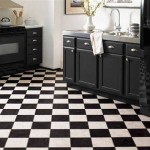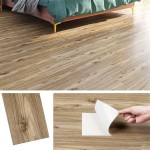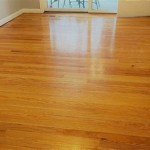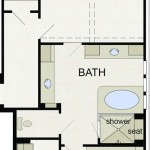Non-Slip Kitchen Floor Tiles: A Comprehensive Guide
The kitchen, a hub of culinary activity, is often exposed to spills, splashes, and general moisture. This creates a significant slip and fall hazard, making the choice of flooring a critical safety consideration. Non-slip kitchen floor tiles offer a practical solution, combining aesthetic appeal with essential safety features. Selecting the right type of non-slip tile requires understanding the different materials, textures, and ratings that contribute to slip resistance.
This article delves into the world of non-slip kitchen floor tiles, exploring the various options available, their properties, and the factors that influence their suitability for this demanding environment. The aim is to provide a comprehensive guide to help homeowners, designers, and contractors make informed decisions when prioritizing safety in kitchen flooring.
Understanding Slip Resistance: Key Metrics and Standards
Slip resistance is not an inherent property but rather a characteristic influenced by several factors, including the tile's surface texture, material composition, and the presence of contaminants like water or grease. Measuring and communicating slip resistance requires standardized testing and rating systems. Understanding these metrics is crucial when evaluating different tile options.
One commonly used test is the Pendulum Test Value (PTV), often used in the UK and Europe. This method measures the frictional resistance of a surface using a pendulum-based device with a rubber slider. Higher PTV values indicate greater slip resistance. Generally, a PTV of 36 or higher is considered low risk for slipping in pedestrian areas. However, standards may vary slightly depending on the specific application and regulatory requirements.
Another relevant standard is the Ramp Test, also known as the DIN 51130 test. This test involves individuals walking on a tilted ramp covered with the tile being tested while wearing standardized footwear and applying a lubricant (usually oil). The angle at which the person starts to slip is recorded, and the tile is assigned an "R" rating from R9 to R13, with R13 offering the highest slip resistance. For kitchens, an R10 or R11 rating is typically recommended.
The Americans with Disabilities Act (ADA) also provides guidelines for accessible surfaces. The ADA Accessibility Guidelines (ADAAG) specifies a static coefficient of friction (SCOF) of 0.6 for accessible routes and 0.8 for ramps. While SCOF is not a direct measure of slip resistance under wet conditions, it provides a baseline for evaluating the safety of flooring surfaces for individuals with disabilities.
It's important to note that these ratings are only indicative of slip resistance under specific testing conditions. Real-world scenarios may involve different types of contaminants and footwear, so it's advisable to consider a safety margin when selecting tiles based on these ratings and choose tiles that exceed the minimum requirements.
Types of Non-Slip Kitchen Floor Tiles: Materials and Textures
The material composition and surface texture of a tile significantly impact its slip resistance. Certain materials naturally offer better grip, while textured finishes can further enhance traction. Here are some common types of non-slip kitchen floor tiles:
Porcelain Tiles: Porcelain tiles are a popular choice for kitchens due to their durability, water resistance, and versatility. They are denser and less porous than ceramic tiles, making them more resistant to staining and moisture absorption. To enhance their slip resistance, porcelain tiles can be manufactured with textured surfaces, such as those mimicking natural stone or wood grain. These textures create friction and reduce the likelihood of slipping, even when the floor is wet. Look for porcelain tiles with a matte finish, as glossy finishes tend to be more slippery.
Ceramic Tiles: Ceramic tiles are another affordable and widely used option for kitchen flooring. Similar to porcelain tiles, they can be made with textured surfaces to improve slip resistance. However, ceramic tiles are generally less dense and more porous than porcelain tiles, making them slightly more susceptible to water damage and staining. When selecting ceramic tiles for the kitchen, ensure they are specifically rated for floor use and have a suitable slip resistance rating.
Natural Stone Tiles: Natural stone tiles, such as slate, limestone, and sandstone, offer a unique aesthetic appeal and inherent slip resistance due to their naturally textured surfaces. Slate, in particular, is a popular choice for kitchens due to its rugged texture and resistance to water. However, some natural stone tiles may require sealing to prevent staining and moisture absorption. It's important to choose a stone that is not highly polished, as polished stone can be slippery, particularly when wet. Consider the maintenance requirements of natural stone before making a selection.
Quarry Tiles: Quarry tiles are made from unglazed clay and are known for their durability and slip resistance. They have a naturally rough texture that provides excellent traction, making them a suitable choice for kitchens and other areas prone to moisture. Quarry tiles are also resistant to stains and chemicals, making them easy to clean and maintain. Their earthy tones and rustic appearance make them a good fit for traditional or farmhouse-style kitchens.
Vinyl Tiles: Luxury vinyl tiles (LVT) and sheet vinyl are increasingly popular choices for kitchen flooring due to their affordability, water resistance, and ease of installation. Many vinyl tiles are now available with textured surfaces that enhance slip resistance. Look for vinyl tiles specifically designed for kitchens or bathrooms, as these typically have a higher slip resistance rating. Vinyl is also softer underfoot than tile, which can be more comfortable for standing for extended periods.
Rubber Tiles: Rubber tiles are a less common but highly effective option for non-slip kitchen flooring. They offer excellent slip resistance, even when wet, and are also highly durable and comfortable underfoot. Rubber tiles are often used in commercial kitchens and gyms due to their safety and resilience. They are available in various colors and textures, allowing for customization to suit different kitchen styles. However, rubber tiles may be more expensive than other flooring options and may require specialized installation.
When choosing a tile material, consider the overall aesthetic, durability, maintenance requirements, and, most importantly, the slip resistance rating. A combination of material and texture is often the best approach to ensure a safe and stylish kitchen floor.
Installation and Maintenance for Optimal Slip Resistance
Even the most slip-resistant tiles can become slippery if improperly installed or maintained. Proper installation ensures a level and stable surface, while regular cleaning and maintenance help to preserve the tile's slip resistance and prevent the buildup of contaminants that can reduce traction.
Professional Installation: It is highly recommended to hire a professional tile installer to ensure proper installation. A poorly installed tile floor can have uneven surfaces, which can create tripping hazards and compromise the slip resistance of the tiles. Professional installers have the expertise and tools to ensure a level and stable substrate, proper grout lines, and adequate sealing (if necessary). Correct grout lines are particularly important as damaged or missing grout can allow water to seep underneath the tiles, potentially leading to mold growth and further compromising the floor's integrity.
Regular Cleaning: Regular cleaning is essential to maintain the slip resistance of kitchen floor tiles. Spills and splashes should be cleaned up immediately to prevent them from drying and becoming slippery. Use a mild detergent and warm water to clean the floor regularly, avoiding harsh chemicals or abrasive cleaners that can damage the tile surface and reduce its slip resistance. For textured tiles, use a brush or mop with stiff bristles to effectively remove dirt and grime from the grooves.
Grout Cleaning and Sealing: Grout lines are particularly susceptible to staining and mildew growth. Clean grout lines regularly with a grout cleaner and a stiff brush. For heavily stained grout, consider using a bleach-based cleaner, but be sure to rinse thoroughly to avoid discoloration. Sealing the grout lines can help to prevent staining and moisture absorption. Apply a grout sealer according to the manufacturer's instructions, and reapply as needed.
Use of Entrance Mats: Place entrance mats at doorways leading into the kitchen to trap dirt, debris, and moisture from shoes. This can help to reduce the amount of contaminants that are tracked onto the kitchen floor, preserving its slip resistance and cleanliness. Choose mats with a non-slip backing to prevent them from sliding on the floor.
Avoid Waxing or Polishing: Waxing or polishing kitchen floor tiles can create a smooth, glossy surface that significantly reduces slip resistance. Avoid using waxes or polishes on tiles designed for non-slip applications. If the tiles are already waxed or polished, consider removing the coating with a suitable stripper and opting for a matte finish sealer instead.
Addressing Specific Hazards: Identify and address specific slip hazards in the kitchen, such as areas prone to spills or grease buildup. Use non-slip mats or rugs in these areas to provide additional traction. Consider using a degreaser specifically designed for kitchen floors to remove grease and oil that can make the floor slippery.
By following these installation and maintenance guidelines, homeowners can ensure that their non-slip kitchen floor tiles provide a safe and attractive surface for years to come. Remember that regular maintenance is key to preserving the slip resistance and overall appearance of the flooring.

Gastronomy Kitchen Anti Slip Flooring With Swissgrip

Kitchen Tiles Anti Slip Subsequent Renovation

Altro Non Slip Safety Floor Heavy Duty Vinyl Commercial Kitchen Flooring R10 Ebay

Rimini Grey Stone Effect Anti Slip Porcelain Floor Tile

Gastronomy Kitchen Anti Slip Flooring With Swissgrip

60x60 80x80 Grey Glazed Matte Non Slip Floor Tile Porcelain Ceramic Tiles For Kitchen Made In Com

Anti Skid Tiles For Bathroom Kitchen Slip Floor Orientbell

Quarry Tile Applications Commercial Kitchen

Non Slip Kitchen Mats Anti Fatigue Mat Comfort Standing Waterproof And Oilproofkitchen Floor Rubber Backed Rugs Carpet For In
10 Pieces Bathroom Anti Slip Floor Tiles Waterproof Background Decoration Wall Stickers Kitchen Wallpaper Self Adhesive








